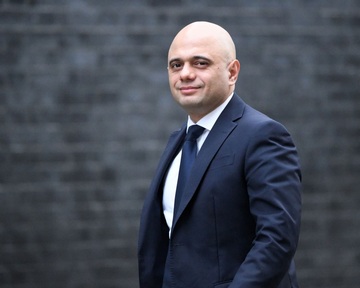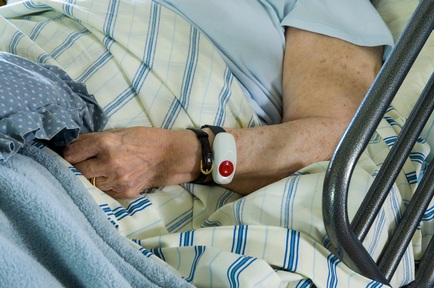Heading footballs could 'cause brain damage and trigger dementia'
Researchers have found what could be a causal link between heading a football and dementia, fuelling concerns, which have been brewing for some time, as an increasing number of high-profile retired footballers are diagnosed with dementia.

Notably, four of the eight surviving outfield players from the 1966 World Cup team have the disease. Ray Wilson, Martin Peters and Nobby Stiles were diagnosed with Alzheimer’s in their sixties while Jack Charlton has been battling with memory loss since his late seventies.
The study ‘Mixed pathologies including chronic traumatic encephalopathy account for dementia in retired association football (soccer) players’, published in the journal Acta Neuropathologica, looked at 14 retired footballers with dementia who were referred to the Old Age Psychiatry Service in Swansea, Wales, between 1980 and 2010.
These ex-footballers were regularly monitored for their memory and thinking skills. They had all played football since childhood or as teenagers and had played for an average of 26 years, with 13 of these playing professional and one a committed amateur. Six of the 13 players said they had been concussed during their careers and all said they regularly headed the ball.
The footballers developed dementia symptoms at an average age of 64 years, and lived with the disease for around 10 years. Six of them gave their brains to research when they died, allowing specialists to look at the changes that had taken place in their brains.
Chronic traumatic encephalopathy
Post-mortem analysis of the brain was carried out by researchers from University College London and the National Hospital for Neurology and Neurosurgery, who found evidence of chronic traumatic encephalopathy (CTE) in the brains of four of the six retired football players. CTE, which has previously been linked to boxing and American football, is a progressive neurological disease found in people who sustain repeated head injuries.
“This is the first time CTE has been confirmed in a group of retired footballers,” said lead author Dr Helen Ling (UCL Institute of Neurology), senior research associate at the Department of Molecular Neuroscience and neurologist. “Our findings of CTE in retired footballers suggest a potential link between playing football and the development of degenerative brain pathologies in later life. However, it is important to note that we only studied a small number of retired footballers with dementia and that we still do not know how common dementia is among footballers.”
Is disease more common in footballers than rest of population?
She added that “all of the players whose brain autopsies showed signs of CTE also had Alzheimer’s pathology, but the relationship between the two diseases remains unclear. Both diseases involve a build-up of an insoluble form of tau protein in the brain. However, in CTE tau tends to accumulate around blood vessels and at the depths of the sulci – the grooves in the brain’s surface – which helps to differentiate CTE from Alzheimer’s pathology under the microscope.
“Previous studies have shown that the risk of Alzheimer’s disease is increased in people with previous head injuries. On the other hand, the risk of dementia is also increased with age and we don’t know if these footballers would have developed Alzheimer’s disease anyway if they hadn’t played football. The most pressing research question is therefore to find out if dementia is more common in footballers than in the normal population.”
Major head injuries more commonly caused by player collisions
Co-lead author Professor Huw Morris (UCL Institute of Neurology), Professor of Clinical Neuroscience and honorary consultant neurologist at the Royal Free Hospital and National Hospital for Neurology and Neurosurgery, called for more research, saying: “Major head injuries in football are more commonly caused by player collisions rather than heading the ball. The average footballer heads the ball thousands of times throughout their career, but this seldom causes noticeable neurological symptoms. More research is now urgently needed to determine the risks associated with playing football so that any necessary protective measures can be put in place to minimise potential long term damage.
“Of course, any kind of physical activity will be associated with health risks and benefits and it is well-established that playing sports can significantly improve physical and mental health.”
The 14 footballers were monitored by consultant psychiatrist Dr Don Williams from the Old Age Psychiatry Service in Swansea . He said: “In 1980 the son of a man with advanced dementia asked me if his father’s condition had been caused by heading the ball for many years as a powerful centre-half.
“As the brain is a very fragile organ, well protected within the skull, this was a constructive suggestion. As a result I looked out for men with dementia and a significant history of playing soccer, followed them up and where possible arranged for post-mortem studies to be carried out. The results suggest that heading the ball over many years, a form of repetitive sub-concussive head injury, can result in the development of CTE and dementia.”
Professional Footballers’ Association
The Professional Footballers’ Association welcomed the research, with a spokesman saying: “The safety and wellbeing of our members both past and present is of paramount importance and we are fully committed in trying to identify if footballers are suffering disproportionately with the onset of dementia.
“The PFA is part of an Expert Concussion Panel formed in 2015, which led to new concussion protocols being introduced into the game.
“In partnership with The Football Association we will fund additional independent research aimed at providing comprehensive and medically robust findings, investigating a potential causal link between the repeated heading of the ball and player-on-player collisions, and increased incidents of degenerative brain disease in later life.”
The research was funded by UK-based not-for-profit The Drake Foundation.
Latest News Analysis
 04-Sep-19
Extra £1.5 billion announced for social care in Chancellor's Spending Review
04-Sep-19
Extra £1.5 billion announced for social care in Chancellor's Spending Review
 02-Jul-19
Department of Health forced to rethink care homes' nursing rates after legal challenge
02-Jul-19
Department of Health forced to rethink care homes' nursing rates after legal challenge
 18-Jun-19
Overnight care workers forced to sleep in offices and told 'bring your own bedding'
18-Jun-19
Overnight care workers forced to sleep in offices and told 'bring your own bedding'
 14-Jun-19
Back in the closet: Third of care home staff have had no LGBT+ awareness training
14-Jun-19
Back in the closet: Third of care home staff have had no LGBT+ awareness training
 11-Jun-19
PM candidates on social care: Rory Stewart calls fixing care an 'unfinished revolution'
11-Jun-19
PM candidates on social care: Rory Stewart calls fixing care an 'unfinished revolution'